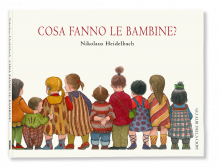Intolerance
ArcoirisTV
- Visualizzazioni: 862
- Lingua:
 | Licenza: © all rights reserved
| Licenza: © all rights reserved
- Fonte: Public Domain | Durata: 176.43 min | Pubblicato il: 2019-02-04
-

- Categoria: archive.org
- Scarica: MP3 | MP4 |
Riproduci solo audio:
Arcoiris - TV
Director D.W. Griffith's expensive, most ambitious silent film masterpiece Intolerance (1916) is one of the milestones and landmarks in cinematic history. Many reviewers and film historians consider it the greatest film of the silent era. The mammoth film was also subtitled: "A Sun-Play of the Ages" and "Love's Struggle Throughout the Ages." Griffith was inspired to make this film after watching the revolutionary Italian silent film epic Cabiria (1914) by director Giovanni Pastrone. Intolerance was a colossal undertaking filled with monumental sets, lavish period costumes, and more than 3,000 extras. The film consisted of four distinct but parallel stories that demonstrated mankind's intolerance during four different ages in world history.
Intolerance is a 1916 silent film directed by D. W. Griffith and is considered one of the great masterpieces of the Silent film. The three-and-a-half hour epic intercuts four parallel storylines, each separated by several centuries: (1) A contemporary melodrama of crime and redemption; (2) a Judean story: Jesus Christ; (3) a French story: the events surrounding the St. Bartholomew's Day massacre of 1572; and (4) a Babylonian story: the Battle of Opis to Persia in 539 BC. Each story had its own tint in the original print. which was criticized by the NAACP and other groups as perpetuating racial stereotypes and glorifying the Ku Klux Klan.
Intolerance is a 1916 silent film directed by D. W. Griffith and is considered one of the great masterpieces of the Silent film. The three-and-a-half hour epic intercuts four parallel storylines, each separated by several centuries: (1) A contemporary melodrama of crime and redemption; (2) a Judean story: Jesus Christ; (3) a French story: the events surrounding the St. Bartholomew's Day massacre of 1572; and (4) a Babylonian story: the Battle of Opis to Persia in 539 BC. Each story had its own tint in the original print. which was criticized by the NAACP and other groups as perpetuating racial stereotypes and glorifying the Ku Klux Klan.
Per pubblicare il tuo commento, riempi i campi sottostanti e clicca su "Invia". Riceverai una email con la richiesta di conferma.



















